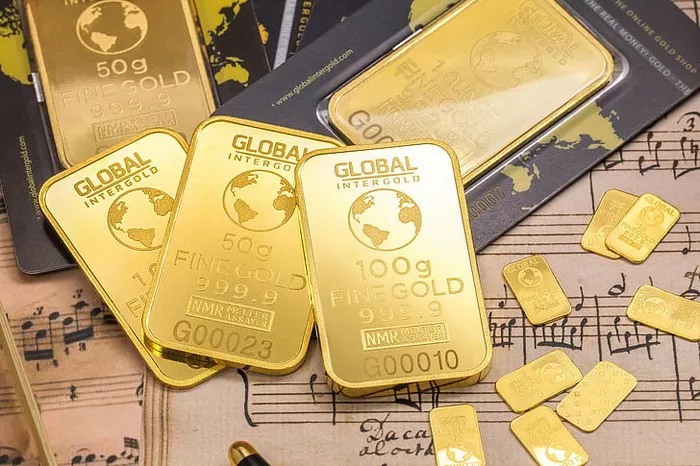When it comes to precious metals, gold has long been celebrated for its beauty and value. Among the various forms of gold available in the market, white gold and yellow gold stand out as popular choices for jewelry. However, a common question arises: which one costs more? This article explores the differences between white gold and yellow gold, their pricing structures, and the factors that influence their costs, providing a comprehensive understanding for potential buyers.
Understanding Gold
The Basics of Gold
Gold is a naturally occurring element, classified as a precious metal due to its rarity, desirability, and intrinsic value. It is measured in karats (K), with pure gold being 24K. However, pure gold is too soft for most jewelry applications, leading to the creation of alloys—mixtures of gold with other metals—to enhance durability and change color.
Types of Gold
Yellow Gold: The traditional color of gold, yellow gold is an alloy typically made from gold, copper, and silver. Its warm hue appeals to many buyers and has been a classic choice for jewelry.
White Gold: This alloy is created by mixing yellow gold with white metals such as palladium, nickel, or silver. The resulting metal has a silvery-white appearance, often plated with rhodium for additional shine and protection.
The Cost Factors of Gold
1. Gold Purity
The purity of gold is a significant factor in its cost. Both white and yellow gold can come in various karats, with 14K and 18K being the most common for jewelry. Higher purity means a higher gold content, which typically translates to higher costs.
14K Gold: Contains 58.3% gold and is often more affordable due to the lower gold content.
18K Gold: Contains 75% gold, offering a richer color and higher price.
2. Alloy Composition
The metals used to create white gold and yellow gold also impact their costs. The addition of metals like nickel or palladium can increase the price of white gold due to the higher cost of these materials. Palladium, in particular, has seen significant price increases in recent years.
3. Rhodium Plating
White gold jewelry is often plated with rhodium to enhance its appearance and protect it from scratches and tarnishing. Rhodium is a precious metal itself and can add to the overall cost of white gold jewelry. Additionally, rhodium plating can wear off over time, requiring periodic replating, which incurs extra costs.
4. Market Fluctuations
The price of gold fluctuates based on supply and demand dynamics in the global market. Both yellow and white gold are affected by these fluctuations, which can lead to varying costs over time.
Comparing Prices: White Gold vs. Yellow Gold
General Cost Overview
In general, the cost of white gold and yellow gold can vary based on the factors outlined above. However, on average:
Yellow Gold: Typically has a lower base cost due to the simplicity of its composition.
White Gold: Often costs more than yellow gold due to the additional alloys and rhodium plating involved in its creation.
Example Pricing
To illustrate the cost differences, let’s consider a few hypothetical scenarios:
14K Yellow Gold Ring: Priced at approximately $300.
14K White Gold Ring: Priced at approximately $350 to $400, considering rhodium plating and higher alloy costs.
Market Trends
Market trends also play a significant role in determining the cost of white versus yellow gold. For example, during periods of high demand for white gold (such as wedding season), prices may increase due to the popularity of white gold rings.
Factors Influencing Consumer Choice
1. Aesthetic Preferences
Consumer choice often hinges on personal style and preference. Yellow gold offers a classic, warm look, while white gold provides a modern, sleek appearance. Some buyers may prefer one over the other based purely on aesthetics.
2. Skin Sensitivity
Individuals with sensitive skin may prefer white gold, especially if it is alloyed with palladium rather than nickel, which can cause allergic reactions in some people. This factor can influence the perceived value and desirability of white gold.
3. Fashion Trends
Trends in jewelry fashion can impact the popularity and cost of both types of gold. For example, if white gold becomes trendy due to celebrity endorsements or fashion shows, prices may rise due to increased demand.
Maintenance and Longevity
White Gold Care
White gold requires more maintenance than yellow gold due to its rhodium plating. Regular cleaning and replating can add to the overall cost of ownership.
Yellow Gold Durability
Yellow gold is generally more resistant to scratches and tarnishing, making it a lower-maintenance option for buyers seeking longevity in their jewelry.
Investment Considerations
1. Resale Value
When it comes to resale value, both white and yellow gold hold their value well, but market demand plays a critical role. Yellow gold has a more established market presence, while white gold may fluctuate based on current trends.
2. Market Demand
The demand for yellow gold has remained relatively stable over the years, while white gold has seen fluctuating interest. Buyers should consider market trends when investing in either form of gold.
Conclusion
In the comparison of white gold versus yellow gold, the question of which costs more is nuanced. Generally, white gold tends to be pricier due to its alloy composition, rhodium plating, and market demand. However, the final cost will depend on specific karat weights, market fluctuations, and individual preferences.
Ultimately, the choice between white gold and yellow gold should be guided by personal taste, lifestyle, and budget. Whether you prefer the classic warmth of yellow gold or the modern sheen of white gold, understanding the factors that influence their costs can help you make informed decisions for your jewelry investments. As both forms of gold hold intrinsic value, they remain timeless choices for any jewelry collection.
Related topics:
- What Karat Gold is the Purest? A Comprehensive Guide
- How to Determine if a Necklace is Real Gold: A Full Guide
- Understanding Gold on MT4: A Comprehensive Guide


